How, when and what to feed petunia for lush flowering
Fertilizing is an important step in caring for any flower, including petunia. Without balanced nutrition, the root system develops slowly, and the shoots do not have enough strength to grow. In order for petunia to delight with white, red, purple and pink flowers, gardeners fertilize it with folk and mineral fertilizers based on nitrogen, potassium, phosphorus, and humic acids. Grow the plant in a pot or flowerpot, in a flower bed or in the front garden. Let us consider in detail what fertilizers guarantee lush flowering of petunia and what rules for applying fertilizers to pay special attention to.
Why feed petunia
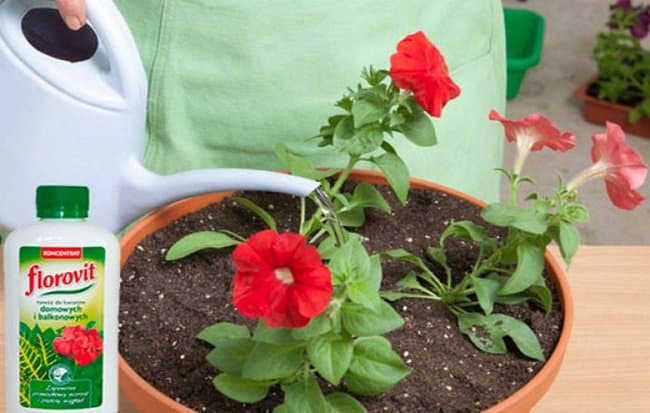
Feeding petunias necessary for growing green mass, developing the root system, and flowering. Thanks to the nutritional components, the flower grows beautiful and is decorative. If you neglect fertilizers, petunia develops poorly and often gets sick.
Attention! Fertilizing is not a panacea. They will not bring any benefit if you do not follow other rules for caring for petunia: watering, loosening the soil, protecting from diseases and pests. Only a set of measures will help to grow a healthy and beautiful flower.
Feeding methods
There are root and foliar methods of applying fertilizers. With root feeding, nutrients are applied to the ground through watering; with foliar feeding, nutrients are applied to the plant by spraying.
Experienced gardeners recommend alternating root and foliar methods so that petunia receives balanced nutrition. Root fertilizers are responsible for the development of roots and nourish the soil with vitamins and microelements. Foliar ones are aimed at the development of flowers and their appearance.
Fertilizer application periods
To properly fertilize petunia, follow a schedule. The first time the plant is fertilized before planting - nutrients are applied to the seedlings. It is especially important to carry out the procedure if the sprouts develop slowly and have an unhealthy appearance. The seedlings are watered with a solution based on B vitamins. For 1 liter of warm and clean water, one ampoule of vitamin B6 or B12 is required. They are sold at the pharmacy.
If you have growth stimulants “Zircon” or “Epin” on hand, use them. Thanks to this feeding, the seedlings quickly grow, become stronger and healthier.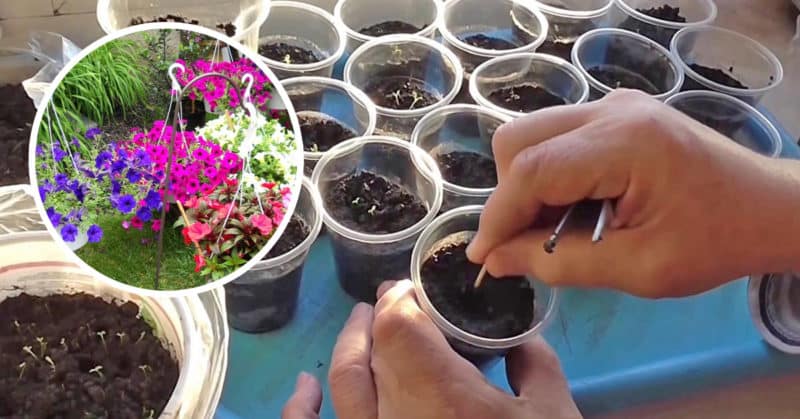
The plant is fertilized the second time when it has already been transplanted to a permanent place. At this time, attention is paid to nitrogen-containing fertilizers - they are responsible for the lush flowering of the annual plant and the growth of new green shoots. Use root and leaf fertilizers, for example, Kemiru Lux or Agricola. They contain not only nitrogen, but also potassium and phosphorus, which are responsible for for further flowering. Purchase fertilizers from gardening stores.
The next fertilizer is applied during the flowering period - at this time the bush is already formed, all that remains is to stimulate budding. For 2-3 weeks, fertilizer is applied once every five days. They use complex preparations “Garden of Miracles” or “Uniflor Bud”, as well as urea, calcium nitrate, monophosphate. Also popular among summer residents is the Domotsvet remedy - it increases the size of buds and the abundance of flowering.In total, 2-3 feedings with this drug are enough per season.
Attention! After flowering, it is recommended to cut the shoots by a third and water the plant with Garden Watering Can fertilizer. Trimming and fertilizing guarantee the health of the plant for the next year.
Types of fertilizing
There is another classification of fertilizers: liquid, dry and long-lasting. Let us consider each type in detail below.
Liquid fertilizers
Liquid fertilizers are popular when growing decorative flowers in the country and in the apartment. They are sold in the form of concentrated solutions, which must first be diluted with water, following the instructions.
remember, that An excess of nutrients leads to slower growth and the emergence of bacteria and microbes.
For petunia use:
- "Bona Forte" contains basic macroelements, microelements and humic acids, with the help of which the plant receives nutrition gradually. To prepare root feeding, dilute 10 ml of the substance in 1.5 liters of water, and dilute 5 ml of the substance in 1.5 liters of water for foliar feeding. Bona Forte is not afraid of freezing and can be stored for two weeks after preparation. Increases disease resistance and is responsible for lush flowering.
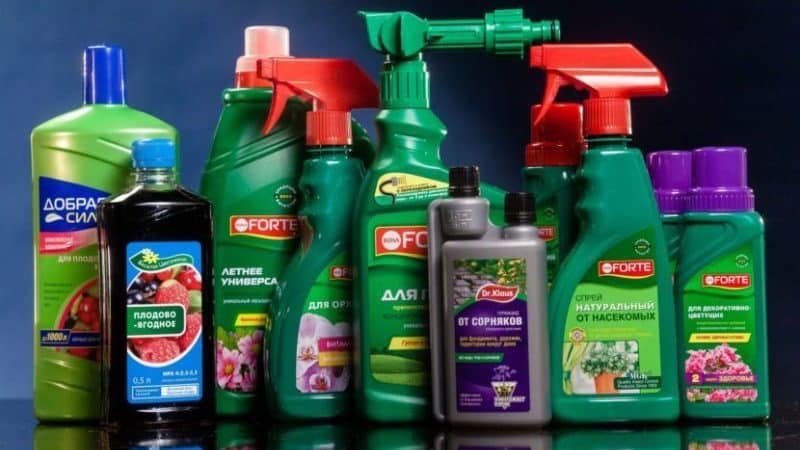
- "Uniflor Bud" — fertilizer based on phosphorus and potassium — stimulates the maturation of buds and flowers, suitable for feeding garden and indoor plants. Sold in garden stores. To prepare the working solution, 1 liter of water and 3 ml of the drug are required. The frequency of feeding is once every 10-15 days. To avoid burning the plant, the concentration of the solution should be no more than 1%.
Dry
Dry fertilizers are used less often than liquid ones, but if you follow the instructions, they give quick results. For petunia, purchase the drug "Plantafol".It contains a nitrogen-phosphorus-potassium complex, as well as boron, zinc, copper, iron, sulfur and manganese. Sold as a white dry powder that is dissolved in water.
"Plantafol" improves carbohydrate metabolism, ripening processes, and flower resistance to drought and frost. The fertilizer is not washed out by water and is harmless to the environment. To prepare the working solution, 10 liters of water and 25 g of active substance are required.
Attention! Before adding the solution, water the petunia generously with warm water. Moisture improves nutrient absorption. If you fertilize a flower without watering, chemical burns of the roots and stem are possible.
Long lasting
Long-lasting fertilizers are those that applied to the soil before disembarking. When in contact with water, they instantly dissolve and nourish the earth with minerals that young plants need. Some people mistakenly believe that once they have used a long-lasting drug, they do not need to feed petunia in the future. The problem of oversaturation of the soil also arises, for example, when potassium is added to the soil, which is already enough. Due to an overabundance, the flower may die, so long-lasting fertilizers are treated with caution.
Flower growers use Ethisso fertilizer. The complex of substances is easily absorbed by the plant and ensures long flowering. "Etisso" is sold in the form of granules, suitable for garden, indoor, and balcony crops. Light gray granules act from the first day of application; under the influence of moisture and heat, they “give” nutrients to the soil. "Etisso" contains nitrogen, potassium, magnesium, phosphorus, zinc, manganese.
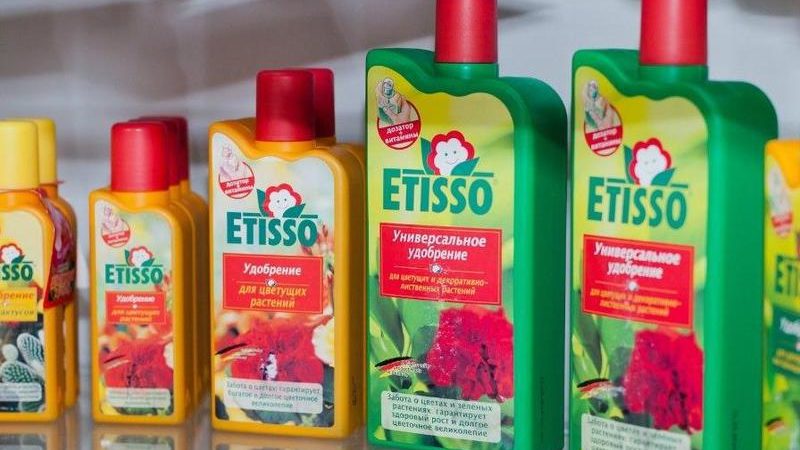
What and how to feed petunia for lush flowering
How to feed petunia for lush flowering? Some gardeners prefer folk remedies, others prefer ready-made store-bought solutions. It is also a popular opinion that for good flowering, folk fertilizers are alternated with store-bought fertilizers.
Ready-made fertilizers
Ready-made fertilizers are easy to prepare and contain useful substances in adjusted proportions. Most fertilizers are affordable and sold in online stores.
In addition to Agricola, Kemira and Plantafol, summer residents purchase the following fertilizers:
- "New Ideal" enriched with mineral complex and humic acids. Sold in liquid form. To prepare a working solution, 10 ml of the substance is diluted in 1 liter of water. The solution is used to water petunia 1-2 times a week. “New Ideal” is compatible with other ready-made formulations.
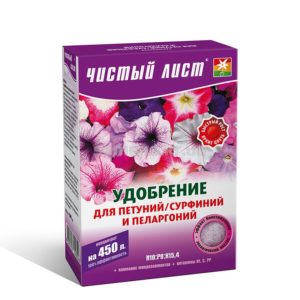
- Fertilizer "Master" for petunias and surfinias they are used during budding and flowering. It improves the appearance of flowers, making them brighter and more attractive. The drug is non-toxic and safe for people and animals. For 2 liters of water, 5 g of dry matter is required. Petunia is watered in spring, summer and autumn, 2-3 times with an interval of 7-10 days.
- Feeding "Clean Slate" for petunias, it replenishes the lack of minerals in the soil and benefits the plant at any time during the growing season. Contains vitamins and phytohormones. A clean leaf increases the growth of the above-ground part of the plant, increases the resistance of flowers to drought and improves the quality of budding. The drug in an amount of 10 g is dissolved in 10 liters of water at room temperature and sprayed on petunia 2-4 times a month. Fertilizer is absorbed by the plant by 95-97%.
Folk recipes
A popular recipe using baker's yeast is popular. The solution accelerates the development of the root system and prolongs flowering.For preparation you need 100 g of dry yeast, 50 g of sugar, 10 liters of water. The ingredients are mixed and left for 2 hours in a dry and dark place. Afterwards, the resulting solution is diluted with 50 liters of water. Use the mixture for spraying or watering.
Feed petunia with citric acid solution. For preparation, 12 g of acid and 3 liters of water are required. If you have iron sulfate on hand, add 7.5 g of the substance. The solution is sprayed on the foliage for 5-10 days. Thanks to this, petunia blooms profusely, the leaves acquire a rich green color. Spray flowers in dry and windless weather.
What to water for abundant flowering in pots
Due to lack of moisture, the leaves turn yellow and fall off, the buds become sluggish. If petunia grows in a flowerpot or hill, in June, July and August it is watered twice a day - in the morning and in the evening. When planting a flower, a drainage layer is made of very fine stone or clean river sand at the bottom of the flowerpot. Petunia also likes spraying, only if the water gets on the leaves and not on the flowers.
When growing petunia indoors, the amount of watering is reduced to twice every 3-4 days. It is important that the humidity level in the room is at least 80%. Once a week, instead of water for watering, plants use ready-made or traditional fertilizers in liquid form. If the gardener doubts whether the soil has dried out or not, it is better to postpone watering for 1-2 days.
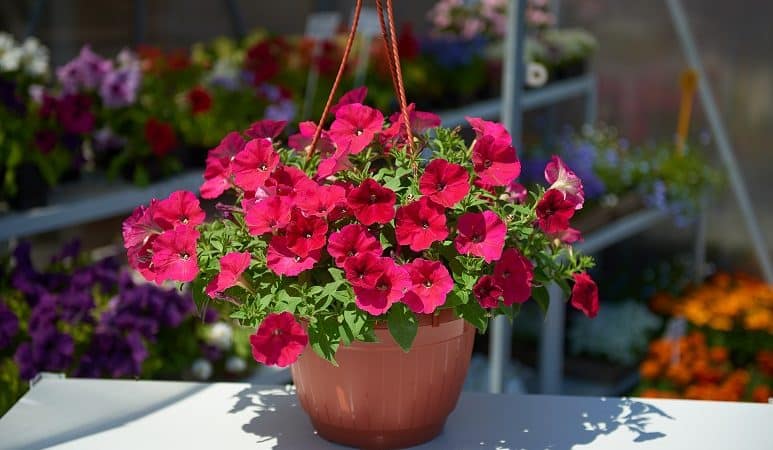
Rules for applying fertilizers
How and when to fertilize petunia for abundant flowering? Experienced flower growers share recommendations:
- feeding begins 10-14 days after planting the seedlings in a permanent place;
- root fertilizers are applied only to moist soil;
- regular feeding begins with the appearance of the second true leaf;
- a week after planting, fertilize the petunia with a growth stimulator;
- when preparing the working solution, carefully read the instructions, study the dosage and pay attention to the shelf life of the finished mixture;
- fertilize petunia on dry, cloudy and windless days;
- alternate root and foliar, ready-made and folk fertilizers;
- At the beginning of flowering, attention is paid to nitrogen-containing compounds.
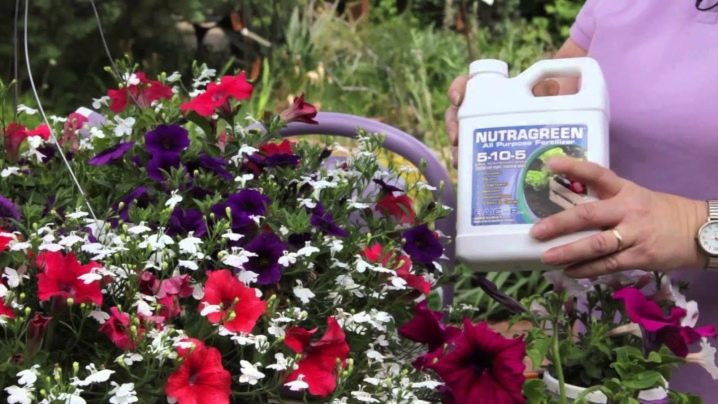
Conclusion
How to fertilize petunia for lush flowering? Summer residents use dry, liquid and long-lasting fertilizers. The most common option is liquid: they are easy to prepare and use, suitable for home and garden plants. Long-lasting and dry ones are used less frequently, however, if all application rules are followed, they bring positive results.
To ensure that petunia receives as many nutrients as possible, the soil is watered generously with warm water before fertilizing. It is not recommended to fertilize dry soil.